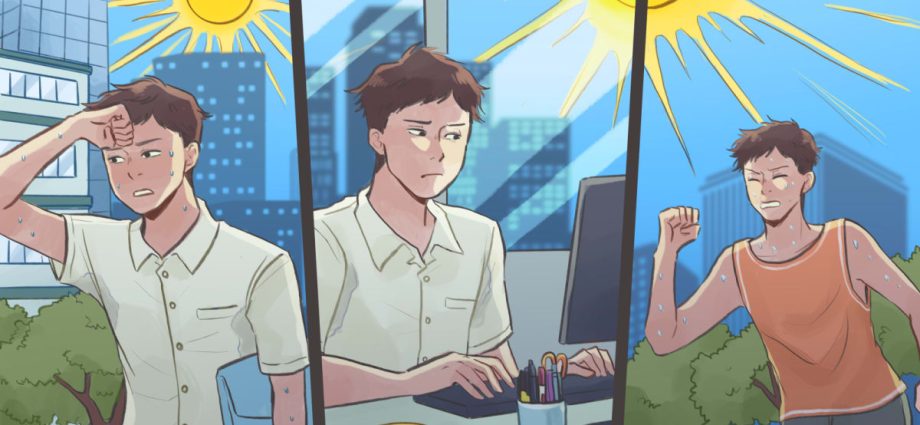
SHOULD WORK START LATER IN THE DAY?
With all the effort and energy needed to keep cool in the daytime, would Singapore reach the point of scheduling work and other essential activities to start later in the day and end well after dark?
That’s not desirable as working overnight has its own drawbacks, according to NUS’ Assoc Prof Lee. The night shift interrupts circadian rhythms and social lives, and workers may start work without being well rested, putting their safety at risk. The need for lighting will also put extra pressure on the power grid.
But even if normal work hours are maintained, leisure patterns, including recreational sports, are likely to change. There is a tendency during warm weather for people to stay indoors as much as possible, only venturing outside in the evening.
This is reinforced by official guidelines. For instance, the Ministry of Education encourages schools to minimise outdoor physical activities between 10.30am and 3.30pm on warmer days.
As temperatures rise, this blackout period could lengthen. But trying to avoid being outside on hot days can lead to a decrease in outdoor physical activity and in turn, affect mental health, Assoc Prof Lee pointed out.
Instead of hardening the boundaries around the hours that people should not exercise outdoors, another approach would be to embrace the heat and manage it.
“We feel heat as a distress. Heat is actually a stressor … All stressors, if you know how to use (them) creatively, can be eustress”, or a beneficial form of stress, said Assoc Prof Lee.
Exercise could be planned for the hottest times of the day in order to put extra strain on the body and maximise training outcomes, said Assoc Prof Lee. To compensate, the workout could be less intense or shorter.
“Training is all about creating strain so that your body can respond … Now with heat, in 30 minutes you get your heart rate to the same level as compared to your old condition (where) you had to do it in 45 minutes,” he said.
“You want to do 45 minutes at 8am, or 30 minutes at 12 noon? You can actually save your time by reaching the same endpoint faster. That, to me, is training effectiveness.”
In hot yoga, practitioners intentionally use heat to intensify physical activity. Instead of practising in artificially heated rooms, for instance, such classes can be held outdoors in unshaded areas when the sun is high on a 40-degree day.
To manage the heat risk, public misting systems that spray ultrafine water droplets onto people can be set up at more parks, exercise corners and even playgrounds, said Prof Wong.
At the Tokyo 2020 Olympics, when heat and humidity soared during Japan’s summer, the Games organisers and national teams used misting fans to cool athletes and even horses.

